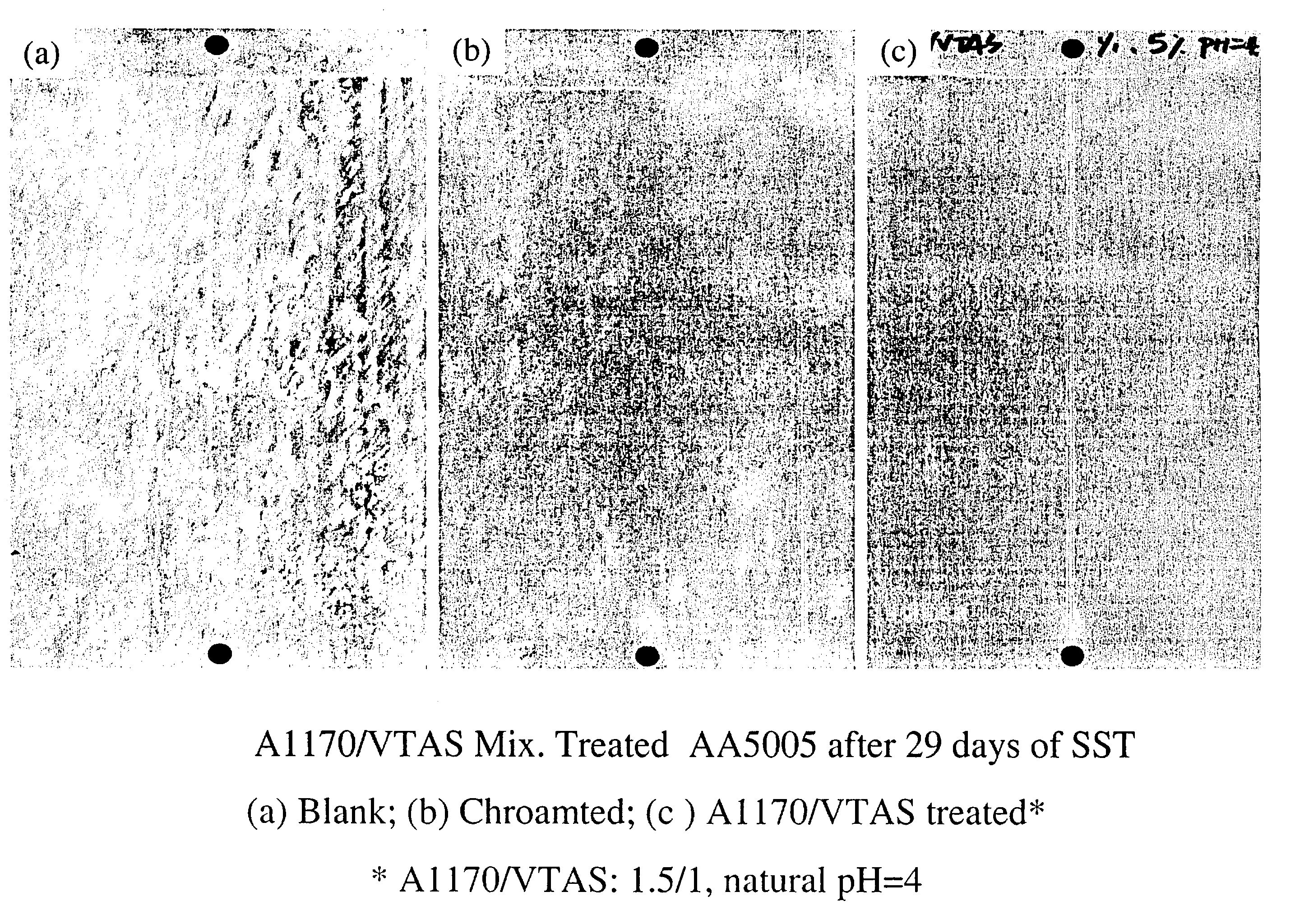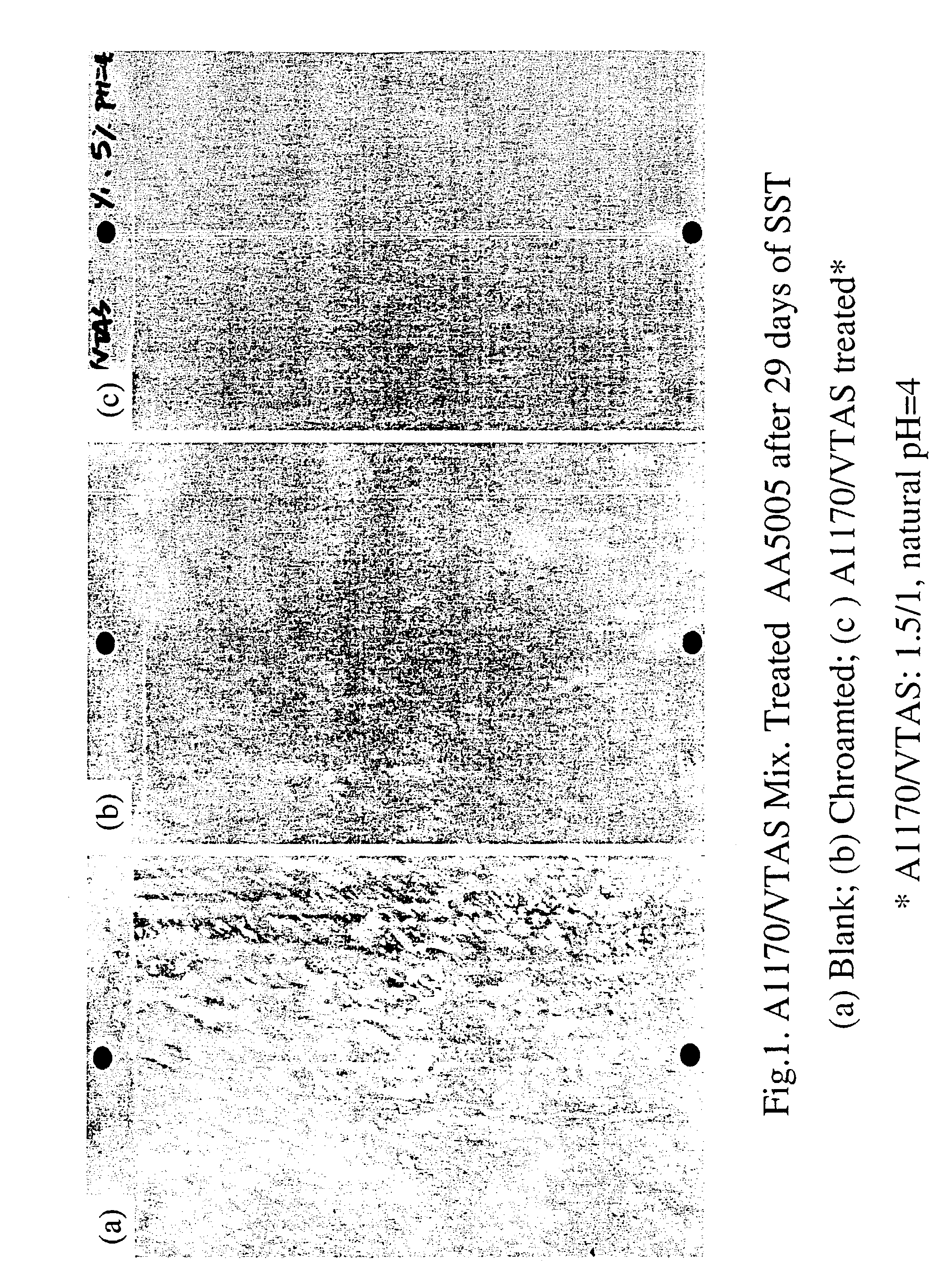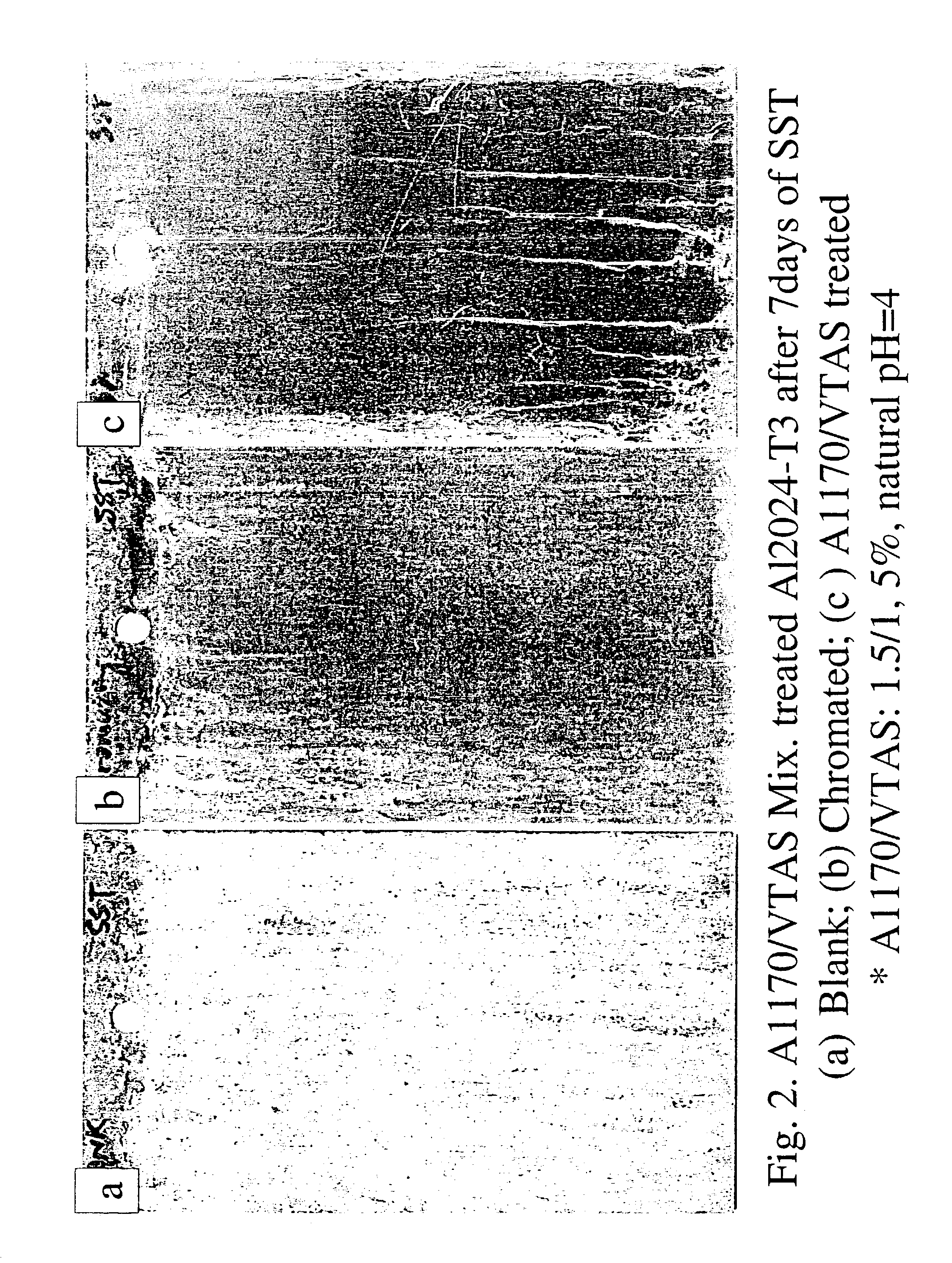Acyloxy silane treatments for metals
a technology of silane and acyloxy silane, which is applied in the direction of solid-state diffusion coating, superimposed coating process, transportation and packaging, etc., can solve the problems of reducing the strength of metals, affecting the quality of metals, and most metals are susceptible to corrosion, so as to improve the corrosion resistance and/or adhesion
- Summary
- Abstract
- Description
- Claims
- Application Information
AI Technical Summary
Benefits of technology
Problems solved by technology
Method used
Image
Examples
example 1
[0088]Salt Spray test (SST)(Lakebluff) was carried out on A1170 / Vinyltriacetoxysilane (1 / 1, 5%, natural pH=4) treated AA5005 panels. Alkaline cleaned blank and chromated AA5005 panels were chosen as controls. The treated panels were cured at 100° C. for 10 min, and then exposed to SST for 29 days, along with the control panels. Four replicates were made for each treatment. The results are presented in FIG. 1.[0089]1 A1170 / VTAS treated panels snowed original surface after 29 days of exposure to SST, i.e. no corrosion occurred during testing.[0090]2. The blank panels corroded heavily, while the chramated ones pitted apparently.
example 2
[0091]Salt Spray test (Lakebluff) was carried out on A1170 / VTAS (1.5 / 1.5%, natural pH=4) treated A12024-T3 panels. Alkaline cleaned blank and chromated A12024-T3 panels were chosen as controls. The treated panels were cured at 100° C. for 10 min. and then exposed to SST for 7 days, along with the control panels. Three replicates were made for each treatment. The results are presented in FIG. 2.[0092]3. A1170 / VTAS treated panels showed almost original surface after 7 days of exposure to SST, i.e, only slight edge corrosion occurred during testing.[0093]4. The blank panels corroded heavily, while the chromated ones pitted slightly.
example 3
[0094]In order to investigate the paintability of A1170 / VTAS water-based silane film on metal substrates, A1170 / VTAS (1.5 / 1.2%, pH=5) water-based silane film was applied on A12023-T3 and HDG, respectively. The treated panels were then powder-painted at Lakebluff with Polyester and Polyurethane powder paints. After that, the panels were put into salt spray chamber for some times, along with the control panels, the blank and the chromated. Three replicates were made for each treatment. The results are shown in FIG. 3.[0095]1. As for A12024-T3 painted with both powder paints (1000 hrs in SST), the corrosion performance and paint adhesion improved significantly, which was equal to the chromated and much better than the blank.[0096]2. As for powder-painted HDG (336 hrs in SST), the corrosion performance improved apparently, compared with the chromated and the blank. The paint adhesion improved somewhat, which was better that the control panels
PUM
| Property | Measurement | Unit |
|---|---|---|
| contact time | aaaaa | aaaaa |
| contact time | aaaaa | aaaaa |
| temperature | aaaaa | aaaaa |
Abstract
Description
Claims
Application Information
 Login to View More
Login to View More - R&D
- Intellectual Property
- Life Sciences
- Materials
- Tech Scout
- Unparalleled Data Quality
- Higher Quality Content
- 60% Fewer Hallucinations
Browse by: Latest US Patents, China's latest patents, Technical Efficacy Thesaurus, Application Domain, Technology Topic, Popular Technical Reports.
© 2025 PatSnap. All rights reserved.Legal|Privacy policy|Modern Slavery Act Transparency Statement|Sitemap|About US| Contact US: help@patsnap.com



